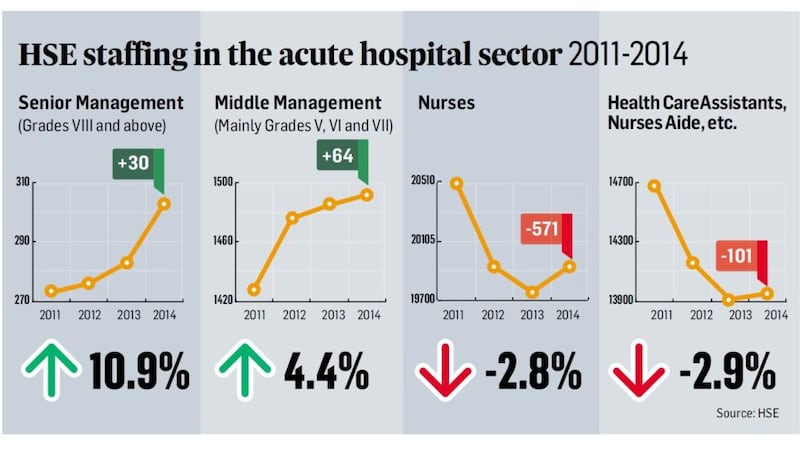The HSE's bill for hiring agency staff may reach €326 million this year, the Department of Public Expenditure and Reform has forecast.
It has maintained in internal documents that a surge in expenditure on agency personnel in the health service is “serving to cancel out any savings made on other areas of the pay bill”.
The department also rejected suggestions that the increase in the bill for agency staff was being driven by reductions in the number of directly employed personnel in the health service.

It said that in the first six months of the year there had been an increase of 368 staff employed across the health service.
There had been an increase of 14 per cent in expenditure on nurses secured through agencies “despite the hiring of additional nursing staff, particularly through the graduate nurse scheme/support staff intern programme”, it said.
Administrative staff
The department also said in the documentation, released under the Freedom of Information Act, that spending on management and administrative staff secured through agencies had increased by 72 per cent in 2014, albeit from a low expenditure base.
It said the cost of securing doctors through employment agencies had increased dramatically to become the most costly category in the health service.
The forecast of a €326 million annual bill for agency staff was set out by the department during the summer in a paper drawn up for the joint monitoring committee for the health service.
Performance report
This committee comprises officials from the
Department of Health
, the
Department of the Taoiseach
and the Department of Public Expenditure and Reform.
In a performance report issued last Friday, the HSE said it had spent €252 million on agency personnel up to the end of September. It said this represented a 43 per cent increase year on year.
The HSE said 82 per cent of the increase in hospital agency expenditure was in the medical and support services pay categories.
The HSE, in a paper submitted to the monitoring committee in September responding to the department’s criticisms, said there was a clear link between movements in directly employed whole-time equivalent staff in the health service and growth in agency costs.
It said the number of directly employed whole-time equivalent staff had been falling steadily since a peak in 2007 while agency costs had risen more significantly in recent years.
Mitigated
The HSE said this, along with additional hours provided by staff under the Haddington Road agreement, had mitigated the loss of directly employed staff.
“Some elements of our services, including within acute hospitals, have reached the stage in more recent times where both directly employed and agency whole-time equivalents are rising,” it said.
“This indicates that the system can no longer deliver existing services or increased services for less absolute resource. From 2009 to 2013 Irish hospitals delivered annual average cost reductions of 1.6 per cent per year.
“This is at odds with the international trend [which] is for year-on-year cost growth in hospital and other health service costs.”
In October The Irish Times revealed the HSE was to put in place new rules under which no doctor would be permitted to work for the health service on an agency or hourly basis for longer than two months.
After two months doctors working on an agency or hourly basis would have to either accept a contract at the official salary rate or leave the public service.










